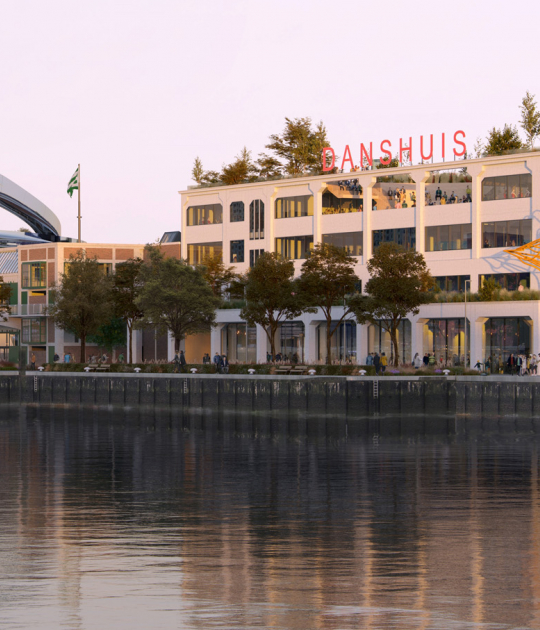The proposed morphology allows the visual connection between the parts and facilitates its integration with the slope of the land and its layout with the landscape of the hillside. Each of these elements was assigned a specific function: the reception and services area, the exhibition area and the restricted area.
Its position on the hillside and the need to reduce the visual impact of a large volume made it insert into the hillside, which is why it is constructively characterized by a part in contact with the ground made with concrete walls, opening with large glazing in the natural level of the terrain, covering the entire complex with a skin of limestone that gives chromatic unity and textures to the complex.


Rock Art Center of Cantabria by Sukunfuku Studio. Photography by Adrià Goula.
Description of project by Sukunfuku Studio
The Visitor´s Center is located on the hillside of Monte Castillo, within the area of influence of the caves that bear his name and are surrounded by the access road to them. The program demanded a relatively large volume, on the complex ground and immersed in a landscape of great beauty.
The program is divided into three separate blocks: reception and service area, exhibition area and restricted area. The three volumes are articulated and arranged around a central courtyard that distributes and connects the different spaces. The resulting volume is a "C" shape facing the natural slope of the plot, which closes the building creating a "green tribune". The mountain becomes a part of the program, the protagonist articulating the building, inviting the visitor to go out and acting as an external space associated with the activities of the centre.

Rock Art Center of Cantabria by Sukunfuku Studio. Photography by Adrià Goula.
 Rock Art Center of Cantabria by Sukunfuku Studio. Photography by Adrià Goula.
Rock Art Center of Cantabria by Sukunfuku Studio. Photography by Adrià Goula.
The building is executed in two different layers. The lower part is resolved with concrete walls in the areas that contain the land, while the façades that overlook the patio and the access area are mainly glazed. On this base sits the stone roof, which sews the three volumes together and folds to become part of the façade, generating a chromatic contrast, scale and texture. The building integrates and interacts with the natural environment around it, creating a relationship with the topography, and breaking its volumes to adapt to the environment.



































































